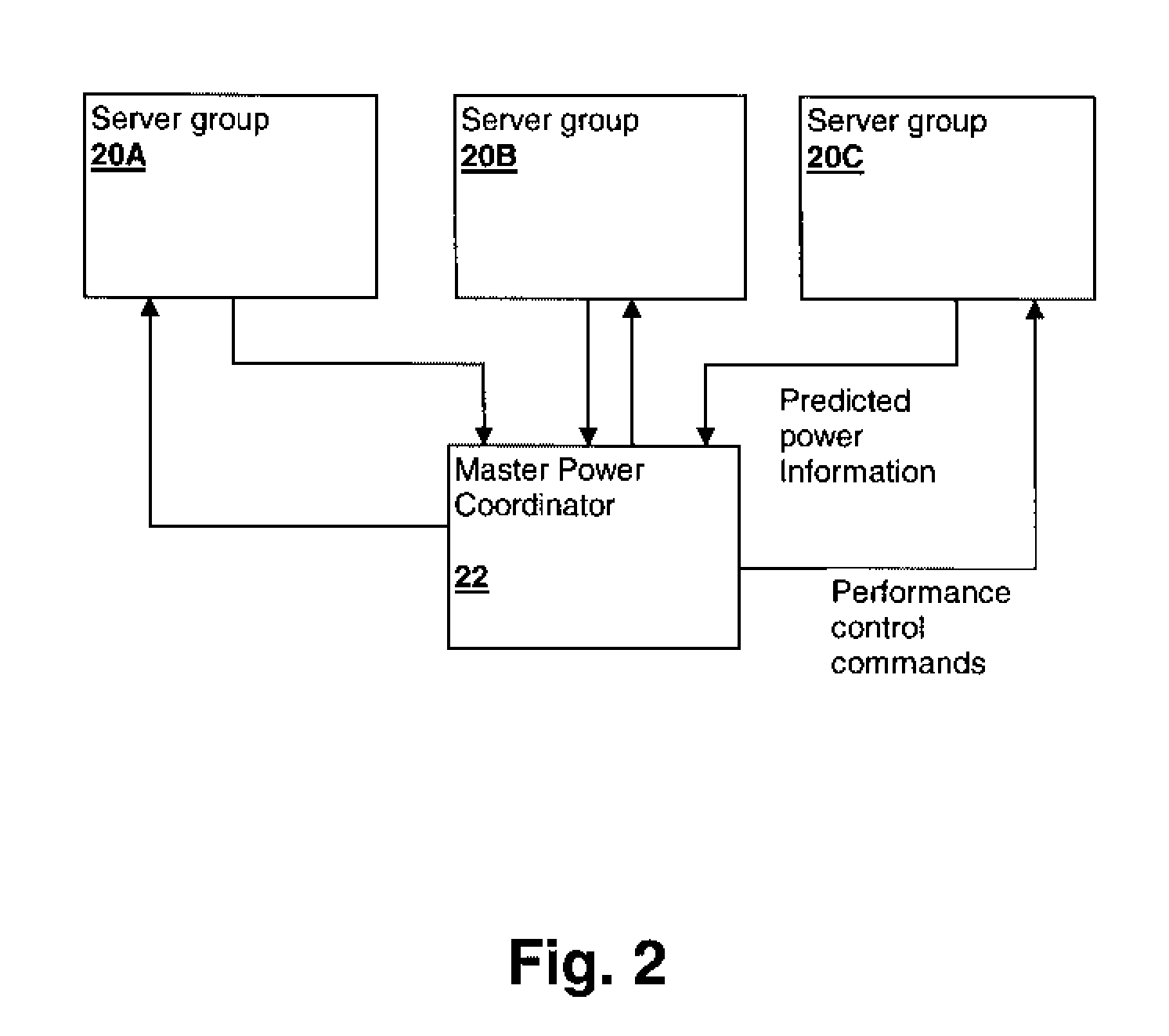Method and system for real-time prediction of power usage for a change to another performance state
a technology of power usage and performance state, applied in the field of power/performance measurement and management in processing systems, can solve the problems of large-scale systems that cannot be installed or fabricated with sufficient power availability or thermal handling capability, and particular server racks may exceed the available power, etc., to achieve accurate prediction
- Summary
- Abstract
- Description
- Claims
- Application Information
AI Technical Summary
Benefits of technology
Problems solved by technology
Method used
Image
Examples
Embodiment Construction
[0019]The present invention concerns a technique for determining the power that would be used by processor or subsystem, such as a server or server facility, if the nominal performance level of the processor or subsystem were adjusted to another level. In one application, the present invention determines the “demand power”, i.e., that power that would be used by the processor or subsystem under current workload and environmental conditions if the performance of the processor or subsystem were set to the maximum level. In other embodiments, the present invention determines one or more power usage predictions for specified nominal performance levels other than the nominal performance level to which the processor or subsystem is set. “Nominal performance level” indicates that while the performance level of the processor or subsystem is generally dynamically changing, and therefore there is generally no specific performance level other than the maximum performance level that is “set” by...
PUM
 Login to View More
Login to View More Abstract
Description
Claims
Application Information
 Login to View More
Login to View More - R&D
- Intellectual Property
- Life Sciences
- Materials
- Tech Scout
- Unparalleled Data Quality
- Higher Quality Content
- 60% Fewer Hallucinations
Browse by: Latest US Patents, China's latest patents, Technical Efficacy Thesaurus, Application Domain, Technology Topic, Popular Technical Reports.
© 2025 PatSnap. All rights reserved.Legal|Privacy policy|Modern Slavery Act Transparency Statement|Sitemap|About US| Contact US: help@patsnap.com



